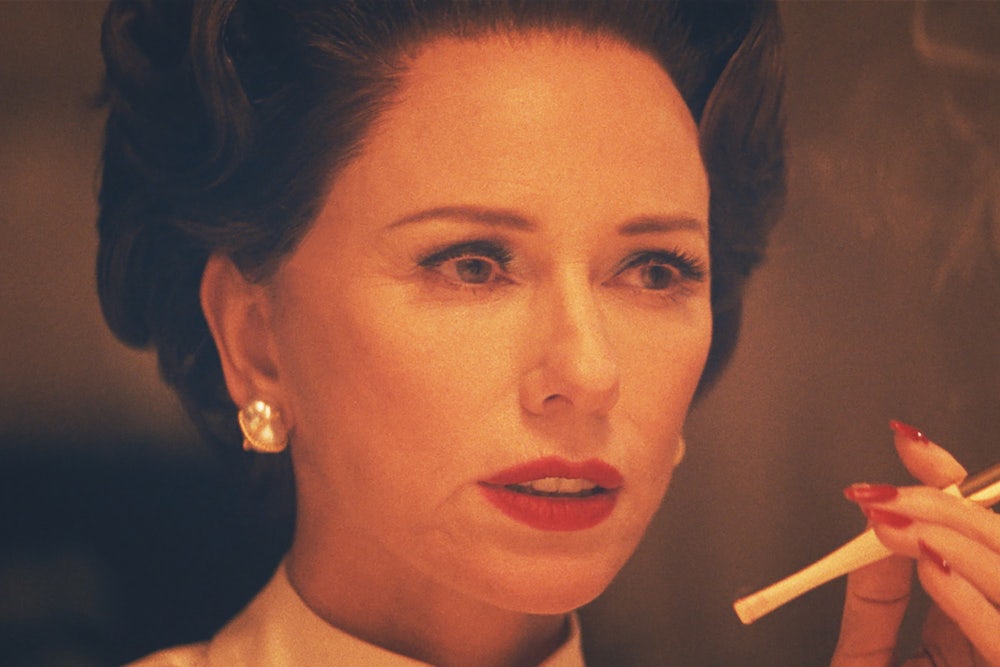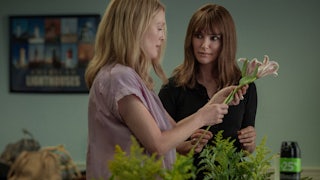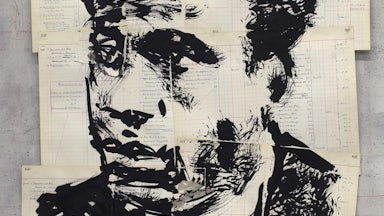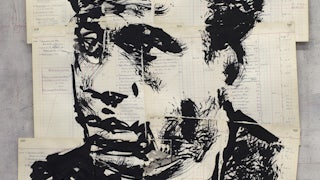By her own estimation, the actress Naomi Watts arrived at the role of ingenue a little late. “I was already at the end of my 20s, early 30s, really, with Mulholland Drive,” she told an interviewer at Vogue in January, “which is what changed everything significantly.” In the film, she plays two halves of the same woman, and the first of these halves, Betty, is an innocent, adorable aspiring actress. Watts being older than your classic on-screen neophyte works brilliantly, both because her age enhances Betty’s dumb naïveté and because it lets her play her mirror-character, a world-weary waitress named Diane, with an appropriate level of exhaustion. Even as the film came out, Watts remembers feeling that she was in danger of tipping into Diane territory herself. “I was told very early on that, at a certain point, it was all going to be over quickly,” she continues in that interview. “In Hollywood, a woman’s career lasts until you’re 40, and that’s it.… I think I heard someone say, ‘Well, you know, once you become un-beep-able, that’s when it’s all over.’”
Watts is now 55 and appears in the FX series Feud: Capote vs. The Swans as the midcentury socialite Babe Paley. She has never looked more striking. Imperious, brittle but not weak, a miracle of good breeding, her Babe justifies Truman Capote’s famous observation that the real-life Paley “had only one fault. She was perfect. Otherwise, she was perfect.” The show, produced by Ryan Murphy as a follow-up to his own 2017 series Feud: Bette and Joan, centers around one of the juiciest scandals in literary and social New York history, and those familiar with the source material might presume that it would fit as neatly into Murphy’s oeuvre as a slender hand into a satin glove from Saks. In the 1970s, looking for a follow-up to In Cold Blood, Capote mined material from his “swans,” a group of rich and idle female friends he had adopted for their beauty and their joblessness; in 1975, he published the first installment of what he intended to be a quasi-fictionalized book about their lives, Answered Prayers, in Esquire.
That excerpt, La Côte Basque 1965, revealed through barely disguised characters that the husband of Capote’s closest friend, the aforementioned Babe Paley, was a serial philanderer and that Babe had discovered his most recent infidelity after his mistress’s menstrual blood had stained their sheets; it implied too that another socialite named Ann Woodward was guilty of shooting her own husband, with the crime having been covered up as a result of her great influence and wealth. Capote’s status as a writer, and his reputation as a famous gossip, had been useful to his swans when he was merely singing for his supper. When their own personal sins became the subject of his virtuosic bitching, they closed ranks, knowing that starving him of social oxygen could silence him forever.
Somewhat surprisingly, in spite of the original scandal’s gossipy perfection, the plot of Capote vs. The Swans does not rank among the most interesting things about the show. One thing that is interesting about it: Naomi Watts’s face. A few more: Chloë Sevigny’s face, Diane Lane’s face, Calista Flockhart’s face, Demi Moore’s face. Six of the season’s eight episodes have been directed by the esteemed queer filmmaker Gus Van Sant, and Van Sant takes evident delight in showing these women, all of them somewhere between 49 and 61, in close-up, often looking pleasantly un-airbrushed. Sevigny, the youngest of the female cast, has long been a darling of the arthouse, and in this season of Feud she plays somewhat against type as the Waspish socialite C.Z. Guest. Seeing her here, with her scrubbed-clean, faintly androgynous handsomeness presented unadorned, it almost feels as if we’re seeing a different actress, and without her veneer of downtown cool, she is more delicately expressive—more authentic, even—than in any other role in recent memory. As with Watts’s Babe, C.Z.’s appeal is burnished, not diminished, by her age and her experience, both of which she wears like second-skin couture.
The show does not privilege “natural” aging over hard graft, either, perhaps recognizing that what is or is not ‘natural’ when it comes to the feminine beauty standard is a subject for debate. (There is good reason why the swan is a timeless metaphor for a woman who strives to maintain her image: All that glacial loveliness atop the water, and those churning, lacertilian feet beneath it.) If a character has had plastic surgery, there is no attempt to hide it; if there are lines around her mouth, they are documented in the same impassive style that Van Sant might use to capture, say, the creases in an origami napkin. In one scene, Jackie Kennedy’s sister Lee Radziwill, played by Calista Flockhart, is seen admiring herself in the mirror, and as she lifts her hair, we see the stitches from a facelift. In another context, a shot like this might be designed to humiliate a character; here, it simply shows the effort that goes into being a female public figure over 50.
The world
of the swans is above all else aspirational, and what is fascinating—and
perhaps unusual—about this season of Feud
is the way that, visually, its mature female leads are consistently presented as
being aspirational too: sleek, magnificent, almost sculptural, and fully in
control of their respective images.
Narratively, Capote vs. The Swans’ most compelling moments are those in which different forms of status and entitlement face off against each other, leaving us uncertain as to who we ought to side with: a group of rich, entitled women, some of whom are far too quick to throw the F slur, or a dazzlingly talented gay man from humble origins whose quips occasionally veer into misogyny. That tension plays directly into an intriguing, sadly underexplored thread in the show, which relates to the relationship between gay men and women, and between gay men and fashionable middle-aged women specifically. Both groups “see the importance of presentation—it’s how we defend ourselves,” Babe tells a documentarian who is interviewing her about her friendship with Capote. “Underneath it all is someone who’s trying to control their environment.” “A homosexual won’t drop you after you reach a certain age,” she observes later. “If anything, they lift you higher.”
Now and then, Capote vs. The Swans reveals itself to be a love story of sorts, and the love that it depicts is not romantic but the kind of all-consuming and platonic love that feels romantic anyway—here, the love between a gay, male outsider and a gorgeous, well-dressed woman in her fifties. Babe Paley and Truman Capote, in spite of their sexual incompatibility, are the loves of each other’s lives, and the lack of actual sex in their coupling removes the kind of power struggles that characterize most of the swans’ marriages: all those infidelities, all that bribery, all that strain.
If any show has the pedigree to fully mine these themes, it ought to be one in the Ryan Murphyverse, given Murphy’s history of elevating older female actresses: Feud’s first season alone paired Jessica Lange, then 68, with the then-70-year-old Susan Sarandon as Joan Crawford and Bette Davis respectively, and it made the supposed undesirability of those stars later on in their careers a major plot point. Crawford, in particular, found herself becoming a staple of the hideously named “hagsploitation” genre, often starring as a mad crone or an undesirable ax-wielding maniac, and Feud: Bette and Joan toed the line between reveling in the high camp of it all and empathizing with its heroines’ fate.
A shared experience of adversity is depicted as being one of the strongest bonds between Truman and Babe in Capote vs. The Swans—his queerness and his childhood poverty and her femininity and age make them underdogs, united by a quietly pervasive sense that they are more or less disposable in comparison with the rich, straight men who run the world. Gay male life, though, cannot—should not—be defined by suffering alone, and nor should middle-aged female life. Once Babe and her peers have ejected him from polite New York society, it begins to feel as though there is no direction for Capote, or the show, but down. Woozy shifts in time—so popular in modern television that the idea of a story playing out chronologically across a series now feels quaint—do not do much to enliven his slow slide into irrelevance and drunkenness, and watching other people suffer writer’s block is, it turns out, nearly as interminable as actually suffering it. As so many episodes lingered on the author’s alcoholic floundering and on Babe’s sadness and ill health, I found myself wishing we had been permitted a few more scenes of them actually enjoying each other’s company: Truman’s wonder at Babe’s good taste, Babe’s delight at Truman’s wit, both of them occupying a private world for two in the way that people do when they are in love.
As anyone who has spent any time online in the last decade or so will no doubt be aware, contemporary culture is full of instances of gay fans championing famous women who have aged out of being ingenues or pinups. At the 2020 Spirit Awards, the Gay Men’s Chorus of Los Angeles took to the stage to mark the “gayest moments” in contemporary film, and devoted a rhapsodic verse to “Laura Dern—just all of Laura Dern.” Had they done the same this year, I presume that Julianne Moore’s equal-parts frightening and hysterically funny lisp in May December would have received similar attention. Without Gay Twitter, Nicole Kidman’s mad advertisement for AMC, in which she delivers a monologue about movie “magic” in a hushed voice over footage of herself wearing what can only be described as a glittering business-casual jumpsuit, would have been just that: an ad, and not a much-memed phenomenon. In such instances, the queer fandom that has coalesced around these older women has nothing to do with hardship or unhappiness and everything to do with joy and silliness—with an appreciation of extroversion, self-ownership, or unabashed flamboyance.
It is this kind of devotion, I think, that one does sense in Capote vs. The Swans when the camera lingers over its female stars, even if the screenplay keeps its observations on the subject at a surface level. “There’s the handle, the trigger, the barrel, and, finally, the bullet,” the real Capote told People magazine in 1975, describing Answered Prayers shortly before the publication of La Côte Basque 1965. “And when that bullet is fired from the gun, it’s going to come out with a speed and power like you’ve never seen—wham!”
In some ways, this season of Feud turns out to be a weapon with a silencer attached: There is no wham, no sudden blast, even when there is an actual body count, and for the most part it is sad in lieu of being salacious. It is notable, though, for the way that its direction and cinematography suggest with such great emphasis that rather than being put before the proverbial firing squad at the age of 40, actresses should remain in front of the camera instead, and that women of a certain age are—if I may quote Vogue’s coy, censoring copy editor—not to be beep-ed with.






